Share:
As a freelance Motion Control Operator I´m offering the full range of support for shooting with Motion Control, including consulting, supervising, 3D- preparing, solving and of course operating machines on set. I´m specialized in machines of Mark Roberts Motion Control London, as the Technical- Oscar- awarded Milo (including Long Arm), furthermore Talos and Modula Rig and the use of MoCo- software “Flair”.
I´m in the industry since late 1990ies, first worked as a grip and key grip over years in numerous productions. While stepping into Motion Control since 2005, that experience helped me a lot to interact within the challenging environment where Motion Control usually happens in a professional and sociable manner. 2014 I began to dive into 3D- (Maya) and compositing software (AE). These are, beside my own creative interests, very crucial skills to perform Motion Control on a high level.
In order that working with motion control cameras is a truly advanced technology, there are almost some steps to go from a creative idea up to the successfully done shot. So it´s highly recommended to involve some relevant knowledge and experience into an early stage of planning those shots. This to have in mind will take a high advantage when going to shoot with a full team on a tight time budget. So don´t hesitate to give me a call in case you have anything due to Motion Control going on…
Consulting
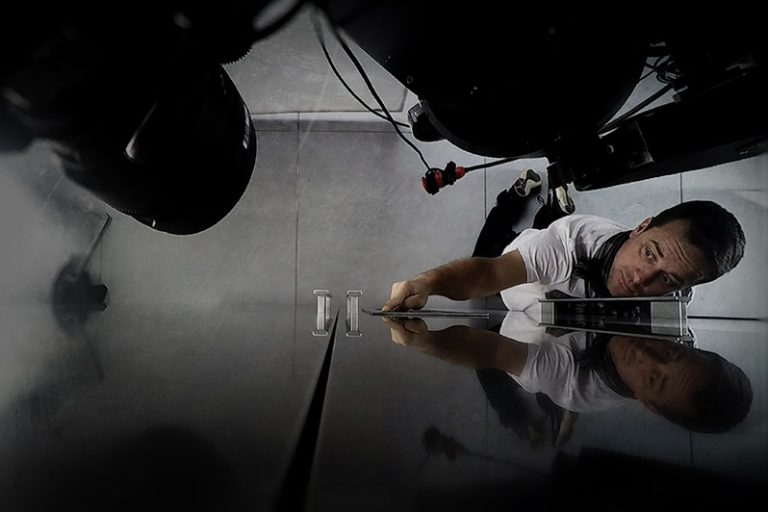
Consulting means to give clients a basic orientation to decide for suitable machinery and to calculate what technical effort is needed for the idea they want to achieve. While an owner of machines primarily wants to bring those into a job, me as a freelancer can provide some more freedom when suggesting rigs. It´s very needed to know there are every time any pro´s and con´s to consider when choosing a motion control rig, and in case there is a rental who owns just one machine, the client may get forced to use that one for his particular needs. This might be the wrong one you´d realize on set. So it´s a good idea to clarify about what is the best choice for the shot you want and, after that, to check about the budget limits and so on. As a common hint in general I want to mention there are always three basic needs in game: Speed, stiffness and mobility (means a smaller rig and an almost more affordable pricing). Please note you can never get all of those at once.
Supervision
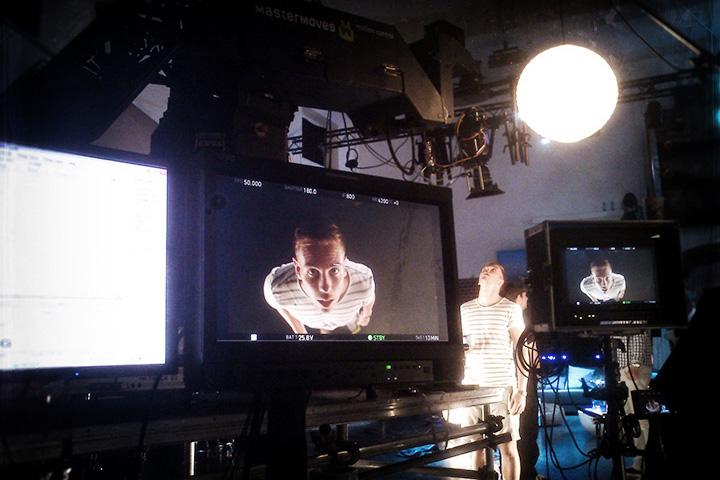
The MoCo Supervisor is the first contact to all MoCo related affairs through all stages of a shoot: Preparing, shooting and follow- up work if there is some. MoCo supervisor is highly involved in planning and monitoring the shoot. Throughout that he communicates to the production what they want to know and what they have to know. Furthermore there is to work together closely with the VFX- and Post-supervisors in a prompt and expert manner. While shooting the MoCo supervisor discusses all wants and needs with the director and DOP and goes for smart and quick solutions with the operator. The supervisor has to coordinate his own crew- members and to interact with other departments to take care of a smoothly ongoing shooting with motion control at all.
3D Prep/ Previz
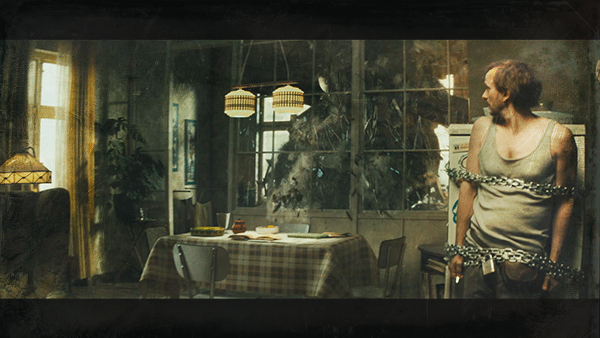
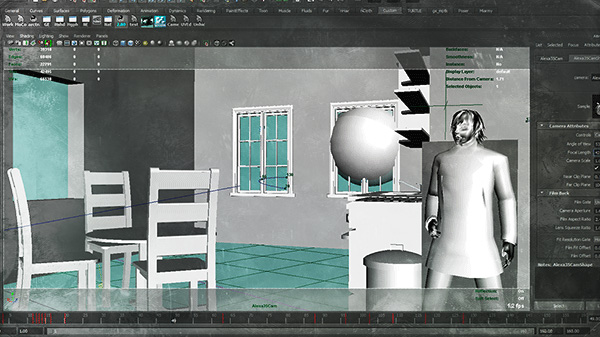
3D prep is an advanced part of working with motion control since there is high expertise needed in working with real machines as well as with their virtual pendants in 3D software. On almost every job I remember was a need or at least a good use for blocking a 3D set with a virtual rig. When setting up a 3D set you´ll have the chance to look through a 3D camera with same settings as you´ll use later on shoot, and this is helpful a lot in most cases. You can find issues before rigging up the real set or react on things those go wrong doing that- weeks or days before director and DOP arrive.
Please read the Blog article motion-control-3d-previsualisation
CG Transfer

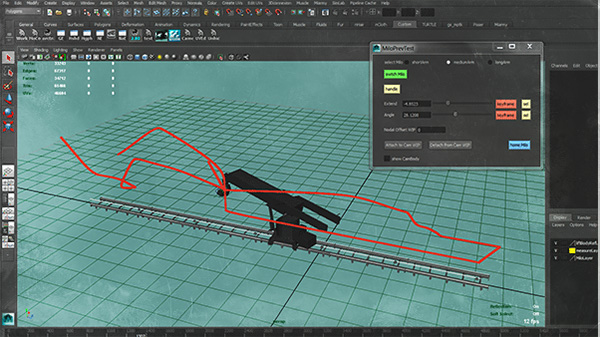
CG Transfer includes importing/ exporting CG data of moving cameras into motion control software Flair and vice versa.
In case there is an animated or matchmoved camera path in CG which is intended to get shot with a MoCo rig, some adjustments might be needed to fit the move into the physical limits of the choosen rig. This piece of work is commonly called solving and I´m using both Maya and Flair offline in a combination for executing that.
To do CG Transfer in a proper and responsible manner, there is an experienced measuring of the set and precise calibration of the whole machine, the camera and the lens required.
Please note two things:
1.) There is a popular error about using a robot in the same way as a 3D camera since both are driven and monitored by a lot of numbers in a computer software. But a real camera always lives in real physics depending speed, acceleration and imagery, so there are several limits compared to 3D and you should plan to check those out before finalizing a shot.
2.) An exported fbx out of Flair is always a path of an ideal camera without any physical behavior- it´s just the numbers of a move. But you may have some in your real filmed footage, little bumps or shakes caused by a high speed or quick change of direction, or lens physics that affect your image. So it´s always a good idea to plan tracking passes to shoot, so you can go for matchmoving the shot afterwards. Thanks god nothing is simpler than those with a Motion Control rig.
Operating
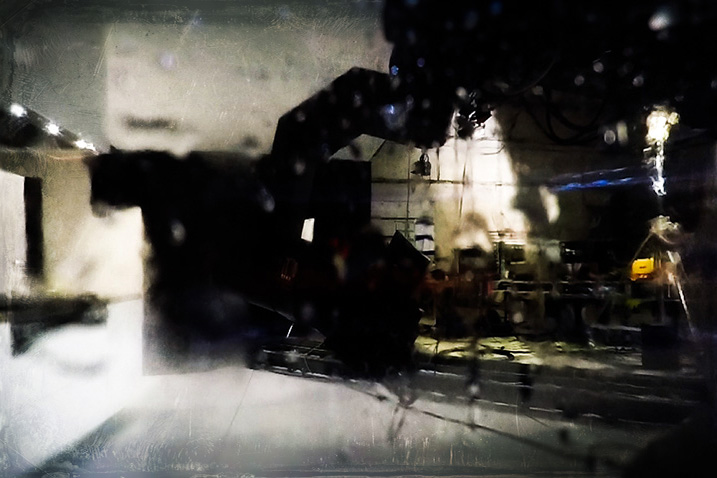
The Operator is the one who creates the camera move on a shoot in a way that is considerably to all creative needs and to a given time budget as well. So the operator has to realize quickly and exactly what are the ideas and to find the best possible solution to bring those to live. He has to program the rig and to communicate what are the horizons technically to the director/ DOP and in timing to the AD. So the transitions are very fluid to the MoCo supervisors job while prep and shoot, and this way the operator is his own supervisor most of the time.
But he is also the one who pushes the button to drive and to stop the machine. So he is responsive for serious safety reasons while shooting with robots and has to organize an eye on all things around those the whole shoot. This should be done in an sociable but sustainable manner which keeps a shooting nice and smooth, so this is usually an old- boy- business indeed.
Share:
